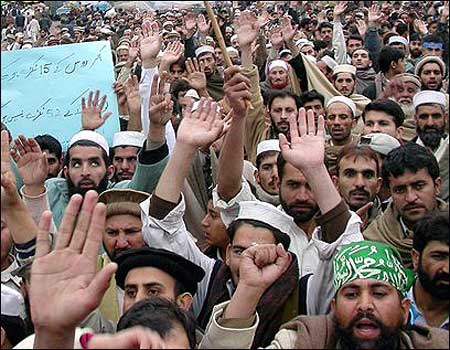A condition of the IMF’s US$6.7 billion bailout package is the privatisation of at least 65 PSEs in two tranches within two years. During Sharif’s two previous terms the government privatised 76 companies. He seems eager to begin the privatisation process from where he left off in 1999. But the task is enormous and full of challenges.
The majority of these PSEs are overstaffed and under heavy debt; they were created to accommodate retiring favourites and party loyalists. Only subsidies that drain national resources keep them afloat. Since any layoff is a politically charged subject it is not easy to restructure the PSEs before sale. Yet few investors will venture into buying moribund companies with conditions on staff retention.
The government is first selling its stakes in the profitable privately run banks and oil and gas companies — hoping to restore some market confidence. This is likely to bring in US$2.5 billion. With early success in selling profitable companies the government expects to encourage more interest to sell off large stakes in failing enterprises and cede management control.
Debate rages over whether profitable companies should be sold at all. Following an unsavoury experience of Pakistan Telecommunication Company’s sale some years back, questions persist on whether management control should be passed on to those who would own as little as a 26 per cent stake.
The public perception of PML-N as a party dominated by big business engenders a suspicion that ‘valuable assets are being sold off to well connected insiders’. The PML-N made only PKR14.16 billion (US$141.6 million) from 76 sales against 62 sales fetching PKR419 billion (US$4.19 billion) during the Musharraf era. Accusations of favouritism and opacity refuse to go away. These can only be addressed by ensuring complete transparency and a fair, competitive process.
Pakistan’s dismal privatisation record causes considerable scepticism. Of privatised companies only 22 per cent performed better than under public ownership and 34 per cent performed significantly worst, according to a 1998 Asian Development Bank report. Most of the money earned through previous sales was used in balance of payment support instead of creating growth opportunities. The common man has barely benefitted, and a repeat performance will cost the government political capital.
Yet Sharif’s style of loyalty before competence prevailed when appointing members of the Privatization Commission. Some are beneficiaries of the previous privatisations; still they are thankfully men of reasonably sound business credentials.
Among the worst performers are Pakistan Steel Mills (PSM) and Pakistan International Airlines (PIA). In 2006, the PSM was valued at PKR22 billion (US$220 million) in an approved bid that was overturned by the Supreme Court — triggering a chain of events that led to Musharraf’s downfall. Since then the mill has run into additional liabilities of PKR86.27 billion (US$862.7 million), which will reduce bidders’ appetites for the mill further. Its over 20,000 employees have no work and their salaries are paid through bank guarantees given by the Ministry of Finance.
Stuffed with party loyalists, PIA loses about PKR30 billion (US$300 million) annually. Of its 34 aircraft only 25 are operational. Despite Pakistan’s ratio of men per aircraft being among the highest in the world, ‘there will be no layoffs’, says the Prime Minister’s Special Assistant on Aviation. The airline will therefore remain burdened with costs of surplus manpower, restricting its potential to be turned around.
For Sharif’s privatisation policy to have a serious chance of success, the relatively high bar of transparency set by the judiciary must be respected. Otherwise, the emboldened judiciary will strike privatisation actions down.
The state hopes to save subsidies and reduce the budget deficit. It also hopes that newly privatised entities will eventually create more jobs. But as no party will want its loyalists to be laid off, Pakistan’s inter-party squabbling may derail the privatisation.
Still, more than just privatising PSEs, the government needs to undertake wider economic reforms so the rich are seen to share the tax burden. ‘Without broader structural reforms, privatisation may simply see private oligopolies replace government monopolies — intensifying private wealth, rather than creating national growth’, claims Salim Raza, a former Governor of the State Bank of Pakistan.
To restore the health of a ruptured economy there needs to be patience and an understanding that recovery can only come after a painful process. How much understanding Sharif can create among a hard-pressed population will be the test of his leadership.
Sajjad Ashraf is an adjunct professor at the Lee Kuan Yew School of Public Policy, National University of Singapore, and an associate fellow at the Institute of Southeast Asian Studies, Singapore.

